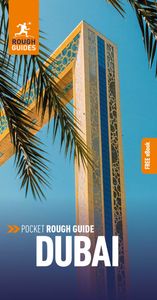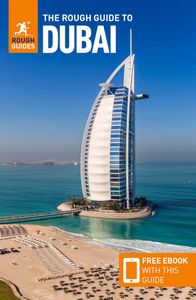Jumeirah Archeological Site
The slight but intriguing Jumeirah Archeological Site is one of Dubai’s best-kept secrets, scattered over several acres of prime real estate in the heart of Jumeirah. First excavated in 1969, the site protects the remains of a small settlement which grew up here thanks to the area’s strategic location on the caravan route between Mesopotamia and Oman. Originally established in pre-Islamic or early Ummayad times (fifth to sixth centuries AD), the settlement reached its zenith during the Abbasid period (ninth to tenth centuries) and appears to have remained inhabited until perhaps as late as the eighteenth century.
The fragmentary remains of seven structures lie scattered around the site, all now largely vanished apart from the bases of their coral-stone walls. Buildings include several residential dwellings, a small mosque, souk (signed “Market Place”) and a “ruler’s palace”, still dotted with the stumps of its original pillars. Most impressive are the remains of a sizeable caravanserai, with small rooms arranged around a large central courtyard, its antique outline providing a memorably weird contrast to the hypermodern skyscrapers of Sheikh Zayed Road rising loftily behind.
Jumeirah Beach Park
Squeezed in between the sea and Jumeirah Road near the suburb’s southern end, Jumeirah Beach Park was easily the nicest park and public beach in Dubai, with a spacious white-sand beach equipped with loungers and parasols and a pleasant strip of wooded parkland behind. It’s currently shut due to work on the massive new Dubai Canal project and is scheduled to reopen with new and improved facilities in late 2016, in the (admittedly rather unlikely) event that everything runs to schedule.
Jumeirah Mosque
Rising proudly above the northern end of the Jumeirah Road, the stately Jumeirah Mosque is one of the largest and most attractive in the city. Built in quasi-Fatimid (Egyptian) style, it’s reminiscent in appearance, if not quite in size, of the great mosques of Cairo, with a pair of soaring minarets, a roofline embellished with delicately carved miniature domes and richly decorated windows set in elaborate rectangular recesses. As with many of Dubai’s more venerable-looking buildings though, medieval appearances are deceptive – the mosque was actually built in 1979.
It also has the added attraction of being one of the few mosques in Dubai open to non-Muslims, thanks to the six weekly tours run by the Sheikh Mohammed Centre for Cultural Understanding. These offer a good opportunity to get a look at the mosque’s rather chintzy interior, with its distinctive green-and-orange colour scheme and delicately painted arches. The real draw, however, is the entertaining and informative guides, who explain some of the basic precepts and practices of Islam before throwing the floor open for questions – a rare chance to settle some of those perplexing local conundrums, whether it be a description of the workings of the Islamic calendar or an explanation of exactly what Emirati men wear under their robes.
Jumeirah: a note on names
Names in Dubai are often used with a certain vagueness – the name Bur Dubai, for example, is often taken to cover the entire area south of the Creek as far as Sheikh Zayed Road, while back when it was first built no one seemed entirely certain whether Dubai Marina should be called Dubai Marina, or New Dubai, or perhaps something else entirely. None, however, has proved as enduringly slippery as Jumeirah. Strictly speaking, Jumeirah proper covers the area from roughly around the Dubai Marine Beach Resort in the north down to around the Majlis Ghorfat um al Sheif in the south. In practice, however, the name is often used loosely to describe the whole of coastal Dubai south of the Creek down to the Burj al Arab, and sometimes even beyond.
Further confusion is added by the fact that Jumeirah has been adopted as the name of the city’s leading luxury hotel chain. The Jumeirah Beach Hotel and Madinat Jumeirah, for instance, aren’t strictly speaking in Jumeirah, but in the adjacent suburb of Umm Suqeim (although both are owned by the Jumeirah chain – as is the Jumeirah Emirates Tower hotel, which is actually on Sheikh Zayed Road, and the Jumeirah Creekside Hotel, in Garhoud). Further south the J-word crops up again at the Sheraton Jumeirah BeachResort and Hilton Dubai Jumeirah Resort, both in what is now the Marina, while the name has also wandered off and attached itself to the Palm Jumeirah artificial island, Jumeirah Lakes Towers and the now abandoned Jumeirah Garden City project – none of them in, or (except for the latter) even particularly near, Jumeirah proper. And that’s not the end of it: thanks to the Jumeirah group the name can now be found attached to properties as far afield as London, New York and Shanghai – an impressive feat of global colonization for the name of what was, until fifty years ago, little more than a humble fishing village.





















